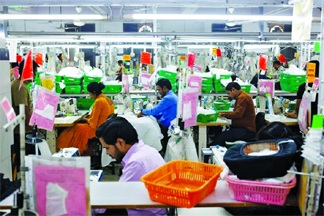
India’s export sectors such as shrimp, carpet, medical devices and gold jewellery will face the impact of the 27 per cent additional import duties announced by the US on April 2, an official said.
However, export segments such as textiles, and pharma will get an edge over its competitor countries in the US.
The US is the largest market of domestic shrimp industry.
Shrimp will now become significantly less competitive in the US market due to the higher tariffs. America already has anti-dumping and countervailing duties on Indian shrimp.
Out of India’s total shrimp exports, the country ships 40 per cent to America. Ecuador and Indonesia are major competitors of the domestic exporters in the US market.
Similarly, America is the largest importer of carpets from India. It was about USD 2 billion in 2023-24.
In 2023-2024, India exported gems and jewellery worth USD 32.85 billion globally, with the US accounting for 30.28 per cent (USD 10 billion).
In 2024, India exported diamonds, gold, and silver worth USD 11.88 billion in exports. It has a tariff differential of 13.32 per cent.
The country exports wide range of products, including cut and polished diamonds, studded gold jewellery, plain gold jewellery, lab-grown diamonds, and silver jewellery.
“The gems and jewellery sector will be the most affected as import tariffs may be up to 20 per cent from the current zero on loose diamonds and 5.5-7 per cent on gold jewellery. The US is one of India’s largest jewellery export markets, accounting for almost 30 per cent of the share,” Kama Jewellery’s MD said.
Imposition of 27 per cent reciprocal tariff on medical device exports to US may pose challenges to the sector’s growth, Association of Indian Medical Device Industry (AiMeD) said.
In 2023-24, India’s medical device exports to the US stood at USD 714.38 million, while imports from the US to India were significantly higher at USD 1.52 billion.
On the positive side, despite the steep hike of tariff for India, it prima facie seems to be a case of India advantage for the apparel sector, with India’s major competing countries like China, Bangladesh, Vietnam, Cambodia, and Sri Lanka having been slapped higher tariffs by the US.
Pharma trade to grow
The Trump administration has exempted the Indian pharma sector from reciprocal tariffs, recognising the vital role played by the domestic industry in supplying affordable medicines across the globe, including the US, according to industry players.
The decision underscores the critical role of cost-effective, life-saving generic medicines in public health, economic stability, and national security, Indian Pharmaceutical Alliance (IPA) Secretary General Sudarshan Jain said.
India and the US share a strong and growing bilateral trade relationship, with a shared vision to double trade to USD 500 billion under the Mission 500 initiative, he added.
Pharmaceuticals remain a cornerstone of this partnership, as India plays a vital role in global and US healthcare by ensuring a steady supply of affordable medicines, he noted.
As per industry sources, medicines from Indian companies provided USD 219 billion in savings to the US healthcare system in 2022 and a total of USD 1.3 trillion between 2013 and 2022. Generics from Indian companies are expected to generate an additional USD 1.3 trillion in savings over the next five years.
Time to be clever: Rajan
Former RBI governor Raghuram Rajan described the reciprocal tariffs on about 60 countries by the Trump administration a “self goal” and said its impact on India will be “smaller”.
“Let us recognise that in the short run, this will adversely affect the US economy first and foremost. Coming to the effects on other countries, the direct effect of any tariff on India’s exports will be to raise prices for US consumers, reducing their demand, and hence Indian growth,” he said. For India now, Rajan said, looking east toward the ASEAN and Japan, looking southwest to Africa, and looking northwest to Europe all make sense. While noting that working out a more equitable relationship with China should be a priority, he said, “equally, let us build stronger bridges within SAARC.”





Be the first to comment